Sadly we might lose so great stories and some great ideas unless they become public domain. Many Marvel stories will be Lost in Licensing. As Marvel’s Conan the Barbarian, by Robert E. Howard, grew, it began to license famous literary characters, starting with Red Sonja and Kull were added. Some of their best comics of the time were of licensed or familiar characters. (Dracula and Frankenstein were now in public domain.) The reprint market has grown to be a huge part of their business. Trade paperbacks, Masterworks and even just plan comic book reprints make a lot of money. Sadly, as licensing lapses, so does Marvel’s rights to reprint those stories. Master of Kung Fu, which featured Fu Manchu, is one of those victims. New Marvel readers may never get the opportunity to read these wonderful stories.
While other publishers have picked up the rights to reprint Conan, a few Conan stories that featured Marvel characters may never be reprinted again. That includes What If? #13, #43, and #29 which featured the Watcher and Thor. There was a trial run on Conan in Chamber of Darkness #4, using a character with a similar name. I wonder if that can be reprinted anywhere. So part of the Marvel Age may be lost.
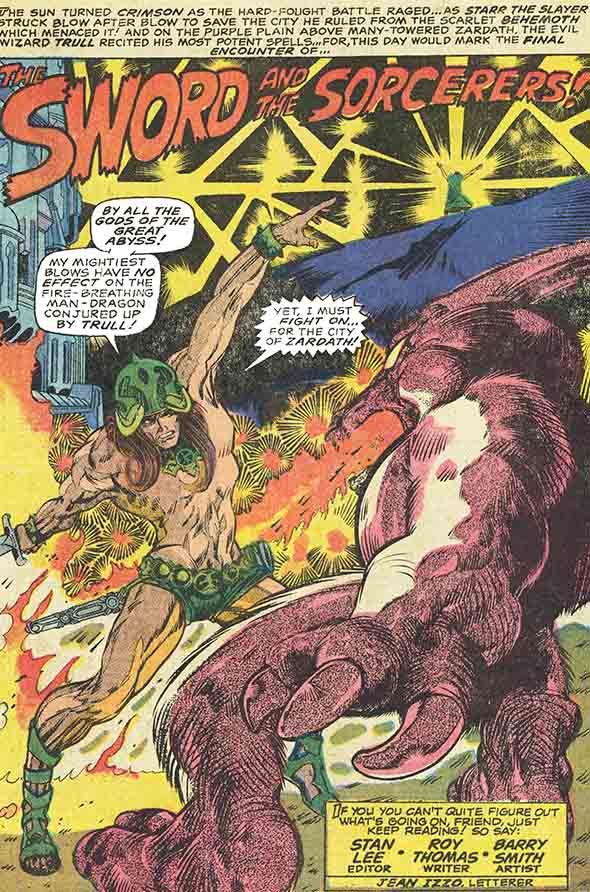
There was also Thongor, Planet of the Apes, Doc Savage, Gullivar Jones, Logan’s Run and several movies and science fiction stories that were adapted in comics such as Worlds Unknown.
Machine Man was a character created by Jack Kirby that made his first appearance in 2001: A Space Odyssey. The character is still used, but there are no references to 2001. There may be no reprinting of it either.
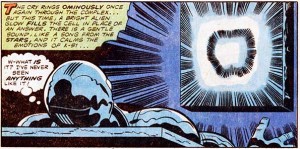
One irony: Deathlok was originally based on Cyborg, the novel that The Six Million Dollar Man was based on. When Marvel did not get the comic book rights (after they were sold to TV) they altered the story to make it their own. So they got the keep the character, instead of losing somewhere in the infinite corridors of licensing.
Master of Kung Fu may not be seen again because it featured Fu Manchu, one of the few characters Marvel used that had appeared in other comics. MOKF becomes one of the best written and drawn series of the later Marvel Age. Paul Gulacy and Jim Starlin and captured and kept the wonderful, distinctive mood and atmosphere. Here, there is something new and different in the world of comics. On TV Kung Fu was a popular show. Just like The Man from U.N.C.L.E. had its roots in the James Bond movies, Kung Fu was inspired by the popular Bruce Lee and his films such as Enter the Dragon.
The Insidious Dr. Fu Manchu a story of an evil genius, was published in 1913 and its main character would have a long run in pulps, movies, comics and magazines. “Imagine a person, tall, lean and feline, high-shouldered, with a brow like Shakespeare and a face like Satan. . .one giant intellect, with all the resources of science past and present. . .Imagine that awful being, and you have a mental picture of Dr. Fu-Manchu, the yellow peril incarnate in one man.”
In 1932 Colliers published a 12-part story, The Mask of Fu Manchu. Wladyslaw Theodor Benda drew the cover.
Fu Manchu’s comic history would begin in daily strips from 1930-1932. These stories were reprinted in Detective Comics starting with issue #17. Previously, Fu Manchu was copied in Detective Comics #1, in the Slam Bradley story by Superman’s creators, Siegel and Shuster. Wally Wood, in 1950 would also draw The Mask of Fu Manchu for Avon Comics.
You cannot underestimate Fu Manchu’s influence on popular fiction at the time. He was copied everywhere. The Yellow Claw, a Fu Manchu copy by Atlas (Marvel’s name then), appeared in his own comic, drawn with the incredible talents of Jack Kirby and Joe Maneely, from 1956-1957. In 1967, Jim Steranko brought him back (well sort of) for the Nick Fury in Strange Tales #160-167. Some of Marvel’s artists and writers began emulating Jim Steranko’s artwork, pacing and story lines and it was evident in these stories. The Mandarin was the most modern copy of Fu. He first appeared in Tales of Suspense in the Iron Man stories, and has since become a fixture in the Iron Man cartoons and is hinted at in the movie.
In 1973, Marvel licensed the character of Fu Manchu from the Rohmer estate and featured him as Shang-Chi’s father. This Fu Manchu and Steranko’s Yellow Claw seemed, in appearance and in their actions, to be twins separated at birth. This meant removing any trace of communist leanings from Fu Manchu. The reprints of the Yellow Claw that appeared, mostly, in Giant-Size Master of Kung Fu featured “doctored” artwork and text to conform to Steranko’s plot lines. This took out the FBI and the communists and replaced them with S.H.I.E.L.D. agents and Hydra. Marvel wanted to connect the characters, making them almost seem related. Certainly their look was similar. There was more innovation and adult themes here than in other current series of the time. When the license ended on Fu Manchu he disappeared from the comic, about issue #151.
“On Yellow Claw, when you describe him as the prototype of Fu Manchu, that’s true if you mean Marvel’s Fu Manchu, but Marvel took Fu from Sax Rohmer, who was the prototype for Yellow Claw in the first place, so in that sense the original Fu was the prototype for Yellow Claw, as well as Mandarin.”
Steve Englehart: “I had a few friends up to my place in Connecticut for a weekend, and we were about to go out and get some dinner when Steve Harper, the artist, said he’d stick around to watch the second episode of a TV show he liked called Kung Fu. We were dubious but he put off dinner for an hour, and I totally fell in love with that show–as did Jim Starlin, who was also there. When the third episode came around, Jim and I were down in New York, and I guess Jim didn’t have a TV, so we asked Roy Thomas if we could watch it at his house. Roy was dubious, and remained so, but we remained enthralled, so without my pretense whatsoever, Jim and I created our own version of what we liked. (Then Roy, who loved old pulp [as did I], had us add Fu Manchu to the mix.)”


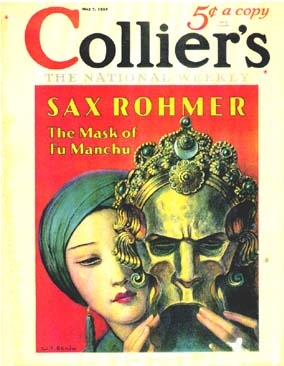
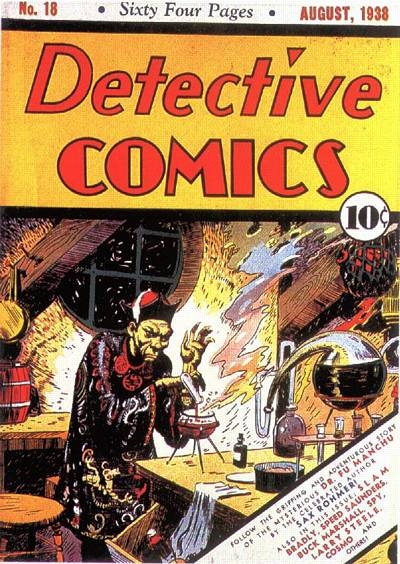
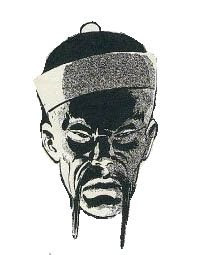
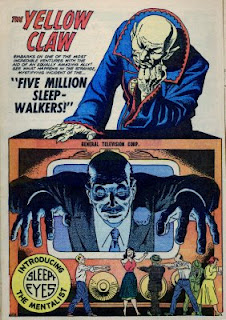
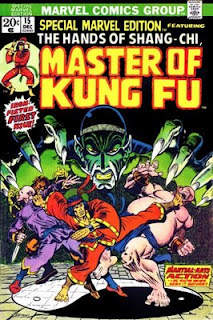
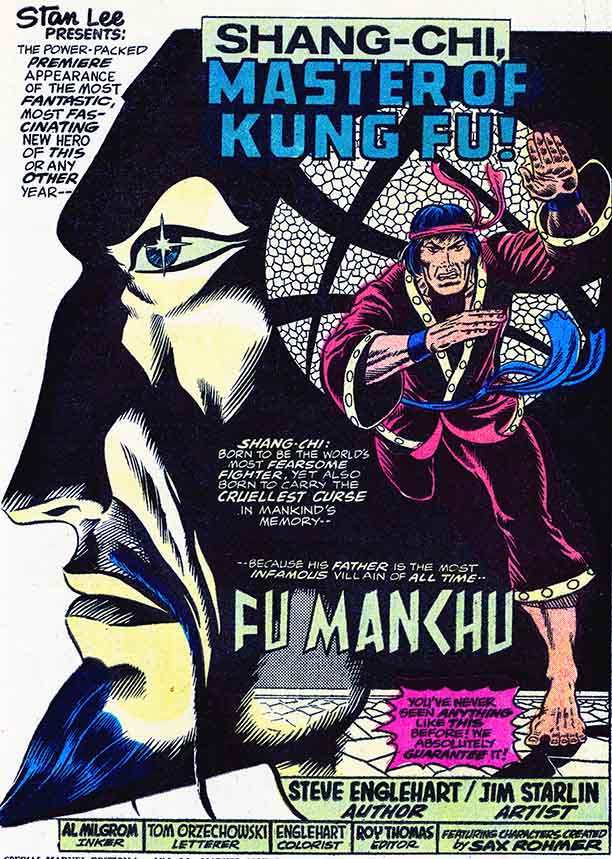
Since we’re both James Bond fans, I would be amiss not to mention that Fu was also the prototype for Dr. No. I’ll also add that in the pre-Yellow Claw era, the original Fu was not a Communist, but a survivor of the Manchu dynasty (hence the name) who ran his own Tong-style criminal secret society, called the Si-Fan, after a failed coup attempt in the Boxer Rebellion and played all political groups to his own ends (even running for President of the United States in one novel). His Si-Fan could be seen as a prototype for S.P.E.C.T.R.E.
Interesting post. Another set of Marvel Comics that we might never get to see are the Tarzan comics done by Roy Thomas and John Buscema. And, as you mentioned, the Machine Man/2001 comics done by Kirby. Of course, Master of Kung Fu was one of my favorite comics of the seventies, written by Doug Moench and drawn by Gene Day and other talented artists. There are a few licensed comics that one might not want to see, was the Human Fly a licensed feature?
Allen, I just don’t know, but I don’t think so. Let me check it oyt.
Oh, don’t bother. I’ll do that myself, sometime. It’s not worth the trouble if you have to dig through a bunch of comics to look. Another licensed feature would be the Godzilla comic, that was Marvel also, right? I wouldn’t have thought of it but my teen age sons are Godzilla fans.
Shogun Warriors was another one they did with Godzilla–both of those were some of their earliest toy-oriented adaptations, there was this large Godzilla action figure being sold on TV then. They did a lot of toy-related stuff after that which might have licensing reprint issues–Battlestar Galactica, Micronauts, ROM: Spaceknight, G.I. Joe, Transformers. . .
Another good post Barry.There was also the 1932 movie,The Mask of Fu Manchu which starred Boris Karloff as Fu Manchu,Lewis Stone as Commissioner Nayland Smith and the beautiful and talented Myrna Loy as Fah Lo See.
Also don’t forget The Micronauts written by Bill Mantlo and featuring art by Michael Golden,Howard Chaykin,Pat Brodrick,Gill Kane,Butch Guice among others.
As far as the Human Fly he was licensed from 1977-79.The funny thing is I just read last night on Deadline.com that The Human Fly is in film development.It seems the film may be based on the real-life stuntman Joe Ramacieri and not the costumed hero from Marvel.
And then there was the dreaded Castle of Fu Manchu, redeemed only by Christopher Lee and MST3K.
I must be the only one who liked Human Fly–of course I also liked Castle of Fu Manchu. . .
Steve Englehart told me Marvel was planning to reprint these issues, but with retouched art:
The deal on that was, when Jim Starlin and I co-created it [for SPECIAL MARVEL EDITION #15], all we came up with was Shang-Chi. Roy Thomas didn’t feel kung fu was enough of a draw for comics, so he wanted to put in Fu Manchu. Which was fine, but then when Marvel gave up the rights to Fu Manchu, they couldn’t reprint the comic. From what I understand, what I’m told is they’re going to go through and change Fu Manchu into the Yellow Claw, who they do own, and (Shang-Chi) will become the son of the Yellow Claw. And if so, they’ll be able to reprint it. Again, Starlin and I co-created that book, but the main run that everybody remembers was Doug Moench and his various artists, and I’d love to see all that stuff back in print again.
http://craneshot.blogspot.com/2013/03/my-chat-with-comic-book-writer-steve.html
Dear Marty
I really, really hate to burst the bubble on this: Master Kung Fu.
First, I am working with people in the masterworks and they mentioned that a deal with the “Fu Manchu Estate” failed and they WILL NOT be reprinting it. This is current news. Marvel has no willingness to alter these books, they ONLY want to print the originals as they exist.
I am one of the writers on the Taschen book and they had to get permissions from both Marvel and the Fu Manchu estate to publish panels and covers with Fu in them. I had to identity Fu (really) so there was no mistake. The estate MAY give permission to do just that, that is, have Taschen print a few images but we will probably NOT see these books reprinted.